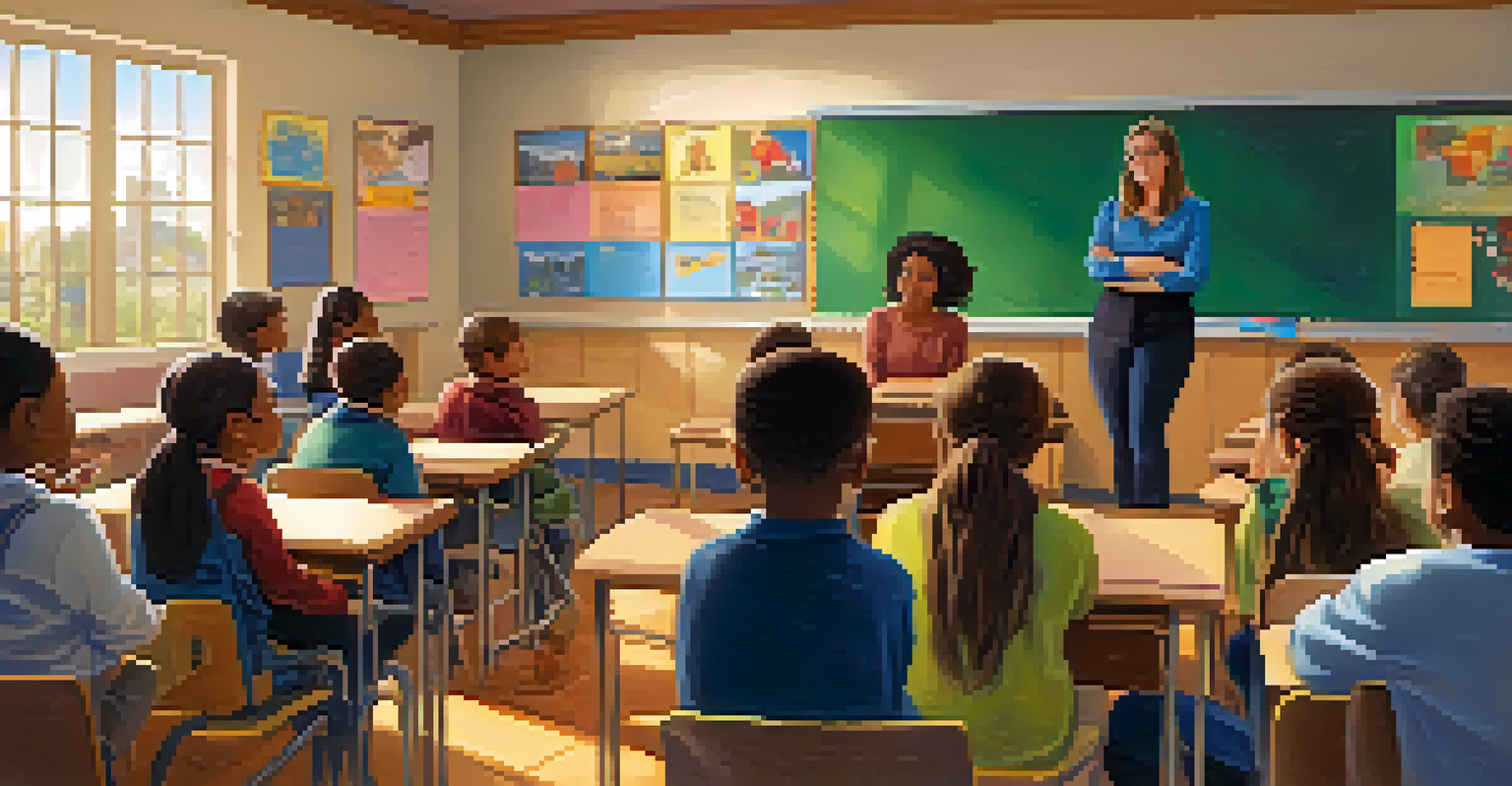The Importance of Disability Representation in Media Narratives

Why Representation in Media Matters for Everyone
Media serves as a mirror reflecting society’s values and beliefs. When individuals with disabilities are represented, it not only validates their experiences but also educates the broader audience. This representation helps to combat stereotypes and foster understanding, making it crucial for a more inclusive society.
In a society that values diversity, representation in media is crucial to reflect the realities of all individuals, including those with disabilities.
For instance, when characters with disabilities are portrayed authentically, it allows viewers to empathize and connect with their stories. This connection can dismantle misconceptions and promote acceptance among those who may have had limited exposure to disability in real life. Essentially, representation is not just about visibility; it’s about building bridges between different experiences.
In a world that often emphasizes differences, media can play a pivotal role in showcasing our shared humanity. By fostering a culture of inclusivity through storytelling, we can create a society where everyone feels seen and valued, regardless of their abilities.
The Impact of Authentic Representation in Film and TV
Authentic representation in film and television can significantly shape public perceptions of disability. When filmmakers choose to cast actors with disabilities in roles that reflect their own lives, it leads to richer, more genuine portrayals. This authenticity resonates with audiences, creating a deeper understanding and appreciation of the challenges faced by individuals with disabilities.

Consider the impact of shows like 'Atypical' or 'Speechless,' which feature characters with disabilities portrayed by actors who share similar experiences. These narratives allow viewers to witness the complexities of their lives, beyond the limitations often depicted in mainstream media. Such representation fosters a sense of belonging for those with disabilities, knowing their stories are being told authentically.
Importance of Authentic Representation
Authentic representation in media fosters understanding and empathy towards individuals with disabilities.
Moreover, when audiences see characters with disabilities thriving, it challenges societal notions of what it means to live with a disability. This can inspire hope and resilience, encouraging viewers to rethink their perceptions and assumptions about disability.
Challenges in Achieving True Representation
Despite the growing awareness of the importance of disability representation, many challenges persist in achieving true inclusivity in media narratives. One significant barrier is the tendency for able-bodied actors to take on roles meant for characters with disabilities, often resulting in misrepresentation. This practice not only undermines the authenticity of the portrayal but also denies opportunities for disabled actors.
The stories we tell can challenge perceptions and foster empathy, helping to create a more inclusive world for everyone.
Additionally, the lack of diverse narratives is another hurdle. Many stories about disabilities tend to focus on tragedy or inspiration, rather than the rich, varied experiences of individuals with disabilities. This narrow perspective can perpetuate stereotypes and limit the audience's understanding of the true spectrum of disability.
To overcome these challenges, media creators must actively seek out and support diverse voices in storytelling. This includes collaborating with writers, directors, and actors with disabilities to ensure their narratives are authentically represented.
The Role of Social Media in Amplifying Voices
Social media has emerged as a powerful tool for amplifying the voices of individuals with disabilities. Platforms like Twitter, Instagram, and TikTok allow disabled creators to share their stories and experiences directly with the public, bypassing traditional media gatekeepers. This democratization of content creation empowers individuals to shape their narratives and challenge misconceptions.
Through hashtags and campaigns, disabled individuals can raise awareness about issues that matter to them, fostering community and solidarity. For instance, movements like #CripTheVote highlight the importance of accessibility in politics, encouraging disabled individuals to participate actively in civic life. Such initiatives demonstrate the potential of social media to facilitate meaningful conversations about disability.
Challenges in Media Inclusivity
Barriers such as able-bodied actors portraying disabled roles hinder true inclusivity and diversity in storytelling.
Furthermore, social media can serve as a platform for collaboration among creators, leading to innovative content that reflects diverse experiences. By sharing their stories, disabled individuals can inspire change and cultivate a more inclusive media landscape.
How Brands Can Champion Disability Representation
Brands play a critical role in shaping societal attitudes, and their commitment to disability representation can have a lasting impact. By featuring individuals with disabilities in advertisements and campaigns, brands can normalize diversity and demonstrate their values of inclusivity. This not only resonates with consumers but also sets a precedent for others in the industry.
Take the example of Aerie, a lingerie brand that has embraced body positivity and inclusive representation by featuring models with disabilities. This approach has not only boosted their brand image but also connected with audiences on a deeper level, showing that representation sells. When brands prioritize authenticity, they cultivate loyalty and trust among their consumers.
Moreover, brands can partner with organizations that advocate for disabled individuals, further amplifying their commitment to inclusivity. By supporting initiatives that promote accessibility and representation, brands can help create a more equitable media landscape.
The Educational Value of Disability Narratives
Disability narratives in media serve as powerful educational tools, providing audiences with insights into the lives of individuals with disabilities. These stories can challenge preconceived notions and promote understanding, making them invaluable in fostering empathy. By engaging with these narratives, audiences can learn about the diverse experiences within the disability community.
For example, documentaries that highlight real-life stories of individuals overcoming barriers can inspire viewers to advocate for change in their own communities. Such narratives can also inform discussions around accessibility, equity, and inclusion, encouraging viewers to reflect on their roles in creating a more inclusive society.
Social Media as a Voice Amplifier
Social media empowers individuals with disabilities to share their narratives and challenge misconceptions directly.
Additionally, incorporating disability narratives into educational curricula can help students develop a more nuanced understanding of disability. This exposure early on can foster a culture of empathy and respect, leading to a more inclusive future generation.
Looking Ahead: The Future of Disability Representation
As society continues to evolve, so too does the conversation around disability representation in media. The increasing demand for authentic stories is pushing creators to rethink their approach to storytelling. With more individuals advocating for representation, we can anticipate a future where diverse narratives are not just an afterthought but a standard practice.
Emerging technologies, such as virtual reality and augmented reality, also present exciting opportunities to explore disability narratives in innovative ways. These mediums can immerse audiences in the experiences of individuals with disabilities, fostering a deeper understanding and connection. The potential for creative storytelling is limitless, and it offers a chance for underrepresented voices to shine.

Ultimately, the future of disability representation hinges on collaboration and commitment from all sectors of the media industry. By prioritizing authentic stories and diverse voices, we can pave the way for a more inclusive and empathetic media landscape, benefiting everyone in society.